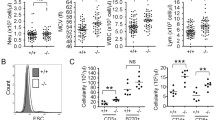Abstract
Using MEDDF cDNA fragment in plasmid pBS-SK-MEDDF as template the coding sequence was cloned into pGEM-T-Easy plasmid by PCR method to delete non-coding sequence. After DNA sequencing it was confirmed that the clone sequence was correct, the coding region then was inserted into the vector pET-30a betweenBamH I andHind III to construct eukaryotic expression vector. It was found that the specific protein was up to 40% of total bactorial proteins in certain high-expressionE. coli. High titer of anti-sera was detected by inoculating New Zealand rabbits with purified MEDDF protein as an antigen. By using immunocytochemical staining it was demonstrated that the expression of MEDDF was exhibited in a developmental stage-specific manner, suggesting that MEDDF may play a certain role in the initiation of murine erythroid terminal differentiation and nuclear condensation. As for the expression of MEDDF appearing in granulocytes and megakaryocyter in murine bone marrow, it may indicate that there is an original relationship between the proteins and differentiation of murine myelogenous lineage.
Similar content being viewed by others
References
Zhang, Z. Y., Liu, S. G., Ma, J. et al., Full length CDNA cloning and sequencing of mouse erythroid differentiation and denucleation factor (MEDDF), Chinese Science Bulletin, 1999, 44(6): 618–622.
Liang, Z. Q., Wang, L. F., Miao, S. Y. et al., The study of sperm membrane proteins, Acta Academiae Medicinae Sinicae, 1980, (2): 147–151.
Engvall, E., Perlmann, P., Enzyme-linked immunosorbent assay (ELISA) quantitative assay of immunoglobulin G., Immunochemistry, London: Pergamon Press, 1971, (8): 871–874.
Koury, M. J., Sawyer, S. T., Boundurant, M. C., Splenic erythroblasts in anemia-inducing Friend disease: A source of cells for studies of erythropoietin-mediated differentiation, J. Cell Physiol., 1984, 121: 526–532.
Sambrook, J., Frisch, E. F., Maniatis, T., Molecular Cloning, 2nd ed, New York: Cold Spring Harbor Laboratory Press, 1989, 880–898.
Orkin, S. H., Transcription factors and hematopoietic development, J. Bio. Chem., 1995, 270: 4955–4958.
Martin, D. I. K., Zon, L. I., Mutter, G. et al., Expression of an erythroid transcription factor in megakaryocytic and mast cell lineages, Nature, 1990, 344: 444–447.
Romeo, P. H., Prandini, M. H., Joulin, V. et al., Megakaryocytic and erythrocytic lineages share specific transcription factors, Nature, 1990, 344: 447–449.
Andrews, N. C., Erdjument-Bromage, H., Davidson, M. B. et al., Erythroid transcription factor NF-E2 is a haematopoietic-specific basic-leucine zipper protein, Nature, 1993, 362: 722–728.
Mouthon, M. A., Berbard, O., Mitjavila, M. P. et al., Expression of tal-1 and GATA-binding proteins during human hematopoiesis, Blood, 1993, 81: 647–655.
Bungert, J., Engel, J. D., The role of transcription factors in erythroid development, Ann. Med., 1996, 28: 47–55.
Author information
Authors and Affiliations
Corresponding author
Rights and permissions
About this article
Cite this article
Zhang, Z., Xue, S. Developmental stage-related expression and identification of murine erythroid differentiation-denucleation factor (MEDDF). Sci. China Ser. C.-Life Sci. 44, 305–313 (2001). https://doi.org/10.1007/BF02879337
Received:
Issue Date:
DOI: https://doi.org/10.1007/BF02879337




